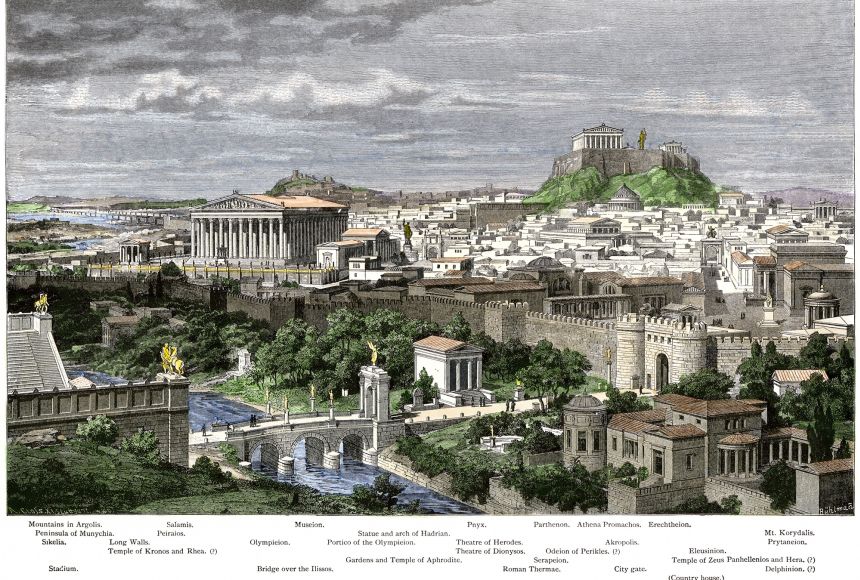ENCYCLOPEDIC ENTRY
ENCYCLOPEDIC ENTRY
Greek City-States
Greek City-States
The Greek city-states were the dominant settlement structure of the ancient Greek world and helped define how different regions interacted with each other.
Grades
5 - 8
Subjects
Anthropology, Archaeology, Social Studies, Ancient Civilizations, Civics
Image
Athens from the east
This hand-colored woodcut gives us an artist's concept of what Athens might've looked like in the time of the Roman emperor Hadrian, when its iconic monuments and temples were still in their prime.
Photograph by North Wind Picture Archive / Alamy Stock Photo

Media Credits
The audio, illustrations, photos, and videos are credited beneath the media asset, except for promotional images, which generally link to another page that contains the media credit. The Rights Holder for media is the person or group credited.
Director
Author
Production Managers
Program Specialists
other
Last Updated
October 19, 2023
For information on user permissions, please read our Terms of Service. If you have questions about how to cite anything on our website in your project or classroom presentation, please contact your teacher. They will best know the preferred format. When you reach out to them, you will need the page title, URL, and the date you accessed the resource.
Media
If a media asset is downloadable, a download button appears in the corner of the media viewer. If no button appears, you cannot download or save the media.
Text
Text on this page is printable and can be used according to our Terms of Service.
Interactives
Any interactives on this page can only be played while you are visiting our website. You cannot download interactives.